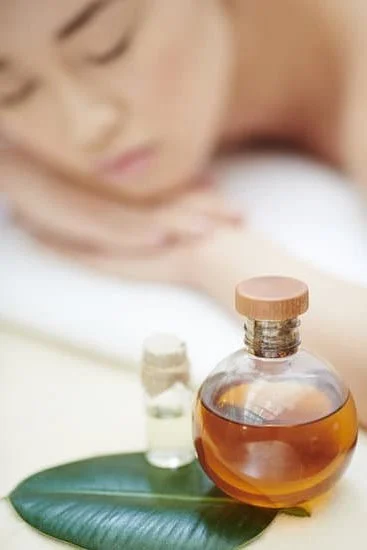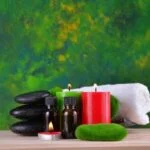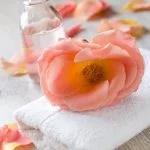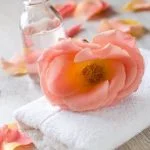In today’s fast-paced and stressful world, finding solace and relaxation is becoming increasingly important. Aromatherapy, with its soothing scents and therapeutic benefits, has gained immense popularity as a natural way to enhance well-being. In this article, we will explore the world of aromatherapy oils and discover how you can create your own blends at home.
Aromatherapy is more than just pleasant fragrances; it is a holistic approach to healing that dates back centuries. The art of using essential oils derived from plants for their therapeutic properties has been practiced for generations. Whether it’s promoting better sleep, relieving stress, or rejuvenating the senses, aromatherapy oils have the power to uplift our mood and enhance our overall well-being.
One of the most satisfying aspects of incorporating aromatherapy into your life is creating your own personalized blends of essential oils. By doing so, not only do you get to unleash your creativity but also tailor the scents and therapeutic properties according to your preferences and needs.
This article will guide you through the fascinating world of aromatherapy oil creation, providing step-by-step instructions on how to make your own blends at home. So let’s dive in and unlock the magic of aromatherapy oils together.
Understanding the Basics of Aromatherapy Oils
Aromatherapy has gained significant popularity in recent years due to its numerous benefits for both physical and mental well-being. Understanding the basics of aromatherapy oils is essential for anyone interested in harnessing the power of these natural substances.
Aromatherapy originated thousands of years ago and has been used by ancient civilizations such as the Egyptians, Greeks, and Chinese. It involves the use of plant extracts known as essential oils, which are derived from specific parts of aromatic plants such as flowers, leaves, bark, or roots. These oils contain concentrated compounds that give them their distinct scents and therapeutic properties.
To create aromatherapy oils, it is crucial to select high-quality essential oils that are pure and properly sourced. The quality of the oil greatly affects its effectiveness and safety when used. Look for reputable suppliers who provide information about their sourcing methods and ensure that they offer authentic essential oils free from additives or contaminants.
Essential oils have a wide range of uses depending on their properties. Some common uses include promoting relaxation and stress relief, uplifting mood, improving sleep quality, alleviating pain and inflammation, boosting immune function, and enhancing focus and mental clarity. Each essential oil has unique characteristics that make it suitable for different purposes. It is important to research and understand the specific properties of each oil before using it in your blends.
By understanding the origins of aromatherapy oils and the importance of selecting high-quality ingredients with desired properties, you can begin your journey into crafting your own aromatherapy blends at home. This knowledge will set a solid foundation for creating effective and personalized oil blends that cater to your specific needs and preferences.
Essential Tools and Ingredients for Making Aromatherapy Oils
List of Essential Tools and Materials
To create your own aromatherapy oils, you will need a few essential tools and materials. Here is a comprehensive list to get you started:
- Glass Bottles: Choose dark-colored glass bottles, such as amber or cobalt blue, to protect the oils from sunlight.
- Measuring Equipment: Invest in measuring spoons, droppers, or pipettes for accurate measurements of essential oils and carrier oils.
- Mixing Utensils: Have separate glass or stainless steel stirrers and spatulas dedicated solely for blending oils to prevent cross-contamination.
- Storage Containers: Besides glass bottles for your final blends, have additional smaller containers for storing individual essential oils.
- Labels: Use adhesive labels or waterproof markers to clearly label each oil blend with its ingredients and date of creation.
- Carrier Oils: Choose high-quality carrier oils such as jojoba oil, almond oil, or coconut oil as the base for diluting essential oils.
- Essential Oils: Build your collection with a variety of essential oils like lavender, peppermint, eucalyptus, tea tree, and citrus oils based on your preferences and desired effects.
- Distillation Equipment (Optional): If you want to extract essential oils yourself, consider investing in a home distillation kit or cold-pressing equipment.
Selecting High-Quality Ingredients
When making aromatherapy oils at home, it is important to use high-quality ingredients to ensure safety and effectiveness. Here are some factors to consider when choosing your carrier oils and essential oils:
- Carrier Oils: Look for cold-pressed or expeller-pressed carrier oils that have been minimally processed without heat or chemicals.
- Essential Oils: Purchase essential oils from reputable suppliers who provide detailed information about their sourcing methods and production processes. Look for oils that are 100% pure and free from synthetic additives or fillers.
- Organic and Wildcrafted Options: Consider using organic carrier oils and essential oils to minimize your exposure to pesticides, herbicides, and other chemicals. Similarly, wildcrafted essential oils are extracted from plants grown in their natural habitat, which can yield higher quality oils.
- Third-Party Testing: Some suppliers conduct third-party testing on their essential oils to ensure purity and quality. Look for certifications or test results that provide transparency about the oil’s composition.
- Aroma Testing: If possible, smell individual essential oils before purchasing them to check for any off-putting odors or signs of oxidation. Fresh and high-quality essential oils should have a vibrant scent that is true to the plant it was derived from.
Remember, investing in high-quality ingredients will not only enhance the effectiveness of your aromatherapy blends but also contribute to a more enjoyable aromatic experience overall.
Sourcing High-Quality Ingredients
Finding high-quality carrier oils and essential oils might seem daunting at first, but there are several reliable sources available:
- Specialty Stores: Visit local health stores, natural food markets, or specialty shops that focus on aromatherapy and holistic products. These stores often carry a wide range of carrier oils and essential oils with knowledgeable staff who can assist you in selecting the right ones for your needs.
- Online Retailers: Many reputable online retailers specialize in aromatherapy supplies. Look for reviews, certifications (such as USDA organic), and detailed product descriptions when shopping online.
- Direct Wholesale Suppliers: Consider contacting direct wholesale suppliers of carrier oils and essential oils for larger quantities or if you plan on making aromatherapy products regularly. They often offer bulk pricing options and can provide information about their sourcing practices.
- Local Farmers’ Markets: Some farmers’ markets may have vendors who produce homemade carrier oils or distill their own essential oils. This is an excellent opportunity to support local producers and have more transparency about the sourcing and production methods.
It’s worth spending time researching and selecting high-quality ingredients, as they are the foundation for creating effective and enjoyable aromatherapy oil blends.
Safety Precautions and Guidelines
The importance of dilution and dosage in using aromatherapy oils
Using aromatherapy oils requires careful consideration of dilution and dosage to ensure safe and effective use. Essential oils are highly concentrated substances that should never be used undiluted on the skin, as they can cause irritation, sensitization, or even burns. It is crucial to dilute essential oils with a suitable carrier oil before applying them topically.
Dilution Guidelines
- For adults: A general guideline for topical use is 2-3% dilution, which means adding approximately 12-18 drops of essential oil per ounce (30 mL) of carrier oil.
- For children: The recommended dilution for children varies depending on their age and individual sensitivity. It is generally advisable to consult a qualified aromatherapist or refer to reputable resources for specific guidelines.
- For sensitive individuals: Those with sensitive skin or certain health conditions may require further dilution or avoidance of specific essential oils.
Dosage Guidelines
When using essential oils in diffusers or inhalers, it is important to follow the manufacturer’s instructions regarding the number of drops needed. A conservative approach is recommended when starting out, as everyone’s tolerance levels can vary.
Specific safety guidelines to follow when handling and using essential oils
While working with essential oils, it is crucial to prioritize safety to minimize any potential risks associated with their use.
Safety Precautions
- Always handle essential oils with clean hands and avoid touching your face or eyes after handling them.
- Keep essential oils out of reach from children and pets.
- Store essential oils in dark glass bottles away from direct sunlight and heat sources.
- Do not ingest essential oils unless under the guidance of a certified aromatherapist or healthcare professional.
- Never apply undiluted essential oils to broken or damaged skin.
- Avoid using photosensitizing essential oils (such as citrus oils) before sun exposure, as they can increase the risk of sunburn.
Cautionary Notes
- Pregnant women should consult with their healthcare providers before using essential oils, as some may not be safe during pregnancy.
- Certain essential oils, such as eucalyptus and peppermint, should be used with caution or avoided by individuals with epilepsy or high blood pressure.
- It is advisable to conduct a patch test before using any new essential oil or blend on your skin to check for any adverse reactions.
Guidelines for testing allergies and sensitivities before using any homemade oil blend
Before incorporating a new homemade aromatherapy oil blend into your routine, it is important to perform an allergy test to identify any potential allergic reactions or sensitivities.
Allergy Testing Process
- Choose a small area of skin, such as the inside of your wrist or elbow.
- Dilute 1-2 drops of the essential oil blend in a carrier oil and apply it to the chosen area.
- Allow the blend to sit for 24 hours without washing off.
- If you experience redness, itching, swelling, or any other signs of irritation during this period, discontinue use immediately and wash the area thoroughly.
This simple allergy test helps determine if you have any adverse reactions to specific essential oils or if you need further dilution for sensitive skin. Always remember that individual responses may vary, so it is crucial to pay attention to how your body reacts when introducing new blends into your aromatherapy practice.
Step-by-Step Guide
Choosing the Right Method of Oil Extraction
When it comes to creating your own aromatherapy oil blends, one of the first steps is choosing the method of oil extraction. There are a few different methods to choose from, each with its own benefits and considerations.
One common method is distillation, which involves using steam to extract the essential oils from plant materials. This method is often used for extracting oils from flowers and leaves. Another popular method is cold-pressing, which is commonly used for citrus fruits. Cold-pressing involves pressing the fruit peel to release its essential oils.
It’s important to research and understand each method before starting the extraction process. Different oils may require different methods, so it’s crucial to choose the right one for the specific plant material you are working with.
Measuring and Blending Essential Oils and Carrier Oils
Once you have extracted your essential oils, it’s time to start blending. The key to successful blending lies in measuring and combining the essential oils with carrier oils.
Before you begin, it’s important to determine the desired potency of your blend. This will depend on personal preference, as well as any specific therapeutic properties you want to achieve. A general rule of thumb is to use about 10-15 drops of essential oil per ounce of carrier oil for a 2% dilution rate. However, this can be adjusted based on individual needs.
When blending your oils together, it’s helpful to use a glass dropper or pipette for precise measurements. Start by adding one drop at a time until you reach your desired scent and therapeutic effect. It’s also recommended to keep track of your blend ratios so that you can recreate them in the future if desired.
Tips for Achieving Desired Scents and Therapeutic Properties
Creating aromatherapy oil blends is not only about achieving therapeutic benefits but also about experiencing pleasing scents. Here are a few tips to help you achieve your desired scents and therapeutic properties in your blends:
- Experiment with different combinations: Don’t be afraid to mix and match various essential oils to create unique and personalized blends. Some oils may complement each other, enhancing both their aromas and effects.
- Consider the top, middle, and base notes: Like perfumes, aromatherapy oil blends have top, middle, and base notes that contribute to their overall scent profile. Experiment with different note combinations to create a well-rounded and harmonious aroma.
- Keep it balanced: When blending essential oils, it’s important to strike a balance between different scents and therapeutic properties. Consider the intensity of each oil and how they interact with one another. Start with small amounts of each oil, adding more as needed until you achieve the desired balance.
Remember, creating your own aromatherapy oil blends is an art form that requires experimentation and patience. Enjoy the process of exploring different combinations and finding what works best for you.
Exploring Various Aromatherapy Oil Recipes
The art of making your own aromatherapy oil blends allows for endless customization and experimentation. By exploring different aromatherapy oil recipes, you can create unique scents that cater to your specific needs and preferences. Whether you’re looking to promote relaxation, boost energy, or alleviate certain ailments, there is a recipe out there for you.
One common and versatile aromatherapy oil blend is lavender. Known for its calming properties, lavender essential oil can help relieve stress and promote better sleep. To make a basic lavender blend, combine 10 drops of lavender essential oil with 2 tablespoons of carrier oil such as jojoba or sweet almond oil. Mix well and store in a dark glass bottle for maximum preservation.
If you’re looking for an invigorating scent to uplift your mood, citrus blends are the way to go. Citrus oils like lemon, orange, and grapefruit are known for their energizing and refreshing qualities. For a simple citrus blend, mix 5 drops each of lemon, orange, and grapefruit essential oils with 2 tablespoons of carrier oil. Adjust the amount of essential oils based on your preferences.
For specific purposes such as relieving headaches or promoting focus and concentration, there are specialized blends that can be created as well. Peppermint essential oil is known for its headache-relieving properties when used topically in small quantities. To create a headache relief blend, combine 5 drops of peppermint essential oil with 1 tablespoon of carrier oil like coconut or olive oil.
| Blend | Essential Oils | Carrier Oil |
|---|---|---|
| Lavender Blend | 10 drops lavender | 2 tablespoons carrier oil (eg. jojoba) |
| Citrus Blend | 5 drops lemon, orange, and grapefruit | 2 tablespoons carrier oil (eg. sweet almond) |
| Headache Relief Blend | 5 drops peppermint | 1 tablespoon carrier oil (eg. coconut) |
Remember to always conduct a patch test before using any homemade aromatherapy blend on your skin, especially if you have sensitive skin or allergies. This will help ensure that you don’t have any adverse reactions to the oils. It’s also worth noting that these recipes serve as a starting point, and you can adjust the amount of essential oils or carrier oils based on personal preference and desired strength of the scent.
By exploring various aromatherapy oil recipes, you’ll be able to create blends that cater specifically to your needs and preferences. The joy of DIY aromatherapy oils lies in not only experiencing the therapeutic benefits but also the satisfaction of creating something unique and tailored to your liking.
Storage and Preservation of Aromatherapy Oils
Storing and preserving your homemade aromatherapy oils properly is crucial to maintain their quality and maximize their shelf life. Here are some best practices to ensure the longevity of your oils:
- Store in Dark, Glass Bottles: Aromatherapy oils are sensitive to light and heat, which can cause them to deteriorate quickly. It’s best to store your oils in dark-colored glass bottles that are properly sealed. This will minimize exposure to light and help maintain the potency of the oils.
- Keep Away from Heat and Sunlight: Heat can accelerate the oxidation process of essential oils, leading to a decrease in their therapeutic properties. Therefore, it’s important to store your oils away from heat sources and direct sunlight.
- Proper Labeling and Organizing: To easily identify your aromatherapy oils, make sure each bottle is labeled clearly with the name of the oil blend, the date it was made, and any special instructions or precautions. Organize your collection by categorizing them based on their properties or intended use.
- Use Amber or Cobalt Blue Bottles: If you don’t have access to dark glass bottles, consider using amber or cobalt blue bottles instead. These colors also provide protection against UV rays while allowing you to see how much oil is left in the bottle.
- Avoid Contamination: To prevent contamination and preserve the integrity of your aromatherapy oils, always use clean droppers or pipettes when dispensing them. Avoid touching the inside of the bottle opening with your fingers.
- Keep in a Cool Place: Storing your aromatherapy oils in a cool place will help slow down their natural degradation process. A dark cabinet or a refrigerator can be ideal storage locations for extending the shelf life of your oils.
By following these storage practices, you can ensure that your homemade aromatherapy oils stay fresh and potent for as long as possible.
Extend the Longevity of Your Oils through Proper Preservation Techniques
In addition to proper storage, there are certain preservation techniques you can implement to further extend the longevity of your aromatherapy oils:
- Keep Oxygen Exposure to a Minimum: Oxygen exposure can cause oxidation and degradation of essential oils. To minimize this, always tightly seal the caps on your bottles after use and avoid leaving them open for extended periods.
- Use Antioxidant-Rich Carrier Oils: Certain carrier oils, such as jojoba oil or rosehip oil, have natural antioxidant properties that can help slow down the oxidation process of essential oils. Consider using these carrier oils in your blends to provide additional stability to your homemade aromatherapy oils.
- Avoid Contaminating the Bottle Opening: When using your aromatherapy oils, make sure not to contaminate the bottle opening with dirt, moisture, or other substances. This can introduce contaminants that may degrade the quality of the oil over time.
- Regularly Check for Signs of Degradation: It is advisable to periodically check your stored aromatherapy oils for any signs of degradation or spoilage such as changes in color, texture, or smell. If you notice any changes, it’s best to discard those oils and create fresh batches.
Taking these preservation techniques into consideration will help maintain the potency and efficacy of your homemade aromatherapy oils for an extended period, allowing you to enjoy their benefits for longer durations.
Incorporating Aromatherapy Oils in Everyday Life
Aromatherapy oils have a wide range of uses and can be easily incorporated into your everyday life to enhance well-being and promote relaxation. There are numerous creative and practical ways to use your homemade aromatherapy oils, allowing you to personalize your self-care routines and enjoy the therapeutic benefits they offer.
One popular way to enjoy the benefits of aromatherapy oils is through skincare. You can add a few drops of essential oils to your favorite unscented lotion or carrier oil, creating a customized moisturizer that not only hydrates but also provides additional therapeutic properties. For example, mixing tea tree oil with a carrier oil like jojoba can help soothe acne-prone skin and reduce inflammation.
Lavender oil blended into a body oil can promote relaxation and relieve stress. Remember to do a patch test before applying the blend to your face or body.
In addition to skincare, aromatherapy oils can be used in haircare routines as well. By adding a few drops of essential oil to your shampoo or conditioner, you can transform your shower experience into an invigorating spa-like moment.
Rosemary essential oil is known for its stimulating effects on the scalp and may promote healthy hair growth when mixed with a carrier oil like coconut or argan oil. You can also create DIY hair masks by combining different essential oils that address specific concerns such as dryness or dandruff.
Another popular application for aromatherapy oils is in massage therapy. By blending essential oils with carrier oils suitable for massage, you can create personalized massage blends that not only relax the body but also support overall well-being. For example, incorporating peppermint essential oil into a massage blend can provide cooling and refreshing sensations while promoting mental clarity. Eucalyptus essential oil combined with a carrier oil like sweet almond or grapeseed can support respiratory health during massage sessions.
Finally, aromatherapy oils can be used to create a pleasing home fragrance. You can add a few drops of your favorite essential oils to a diffuser or nebulizer, filling your space with delightful scents that uplift the mood and create a serene ambiance. Additionally, you can create DIY aromatic sprays by mixing essential oils with distilled water and alcohol, which can be used to freshen up linens, upholstery, and any area of your home.
By incorporating aromatherapy oils into your everyday life, you not only benefit from their therapeutic properties but also have the opportunity to personalize your self-care routines. Whether through skincare applications, haircare rituals, massage therapy blends, or creating a soothing home environment, the possibilities are endless when it comes to enjoying the transformative power of aromatherapy oils in your daily life.
Experiment with different blends and methods to find what works best for you and embrace the joy and benefits that come with incorporating aromatherapy oils into your everyday routine.
Final Thoughts
In conclusion, making your own aromatherapy oils at home can be a truly rewarding and empowering experience. Not only do you have the satisfaction of creating something with your own hands, but you also get to enjoy the numerous benefits that aromatherapy brings to your daily life. By understanding the basics of aromatherapy oils and having the right tools and ingredients, you can easily incorporate this practice into your self-care routine.
There is something magical about the process of creating your own blends. Whether it’s the calming scent of lavender to help you relax before bed or an invigorating citrus blend to uplift your mood in the morning, each oil has its own unique properties that can enhance your well-being. By experimenting with different recipes and finding what works best for you, you have the opportunity to tailor your blends to suit your individual preferences and needs.
Aromatherapy allows us to tap into the power of nature and use plants’ aromatic compounds for therapeutic purposes. From skincare to haircare, massage to home fragrance, there are so many ways to incorporate these oils into our everyday lives. By creating personalized rituals and self-care routines centered around aromatherapy, we can create a sense of balance, promote relaxation, boost our mood, and support overall wellness.
So why not embark on your aromatherapy journey today? With this step-by-step guide and the knowledge obtained from this article, you have all the tools necessary to start creating your own homemade aromatherapy oils. Embrace the joy of DIY and allow yourself to experiment with different scents and blends. The transformational power of aromatherapy awaits you – enjoy the process and reap its holistic benefits in every aspect of your life.
Frequently Asked Questions
Is it cheaper to make your own essential oils?
Making your own essential oils may or may not be cheaper depending on various factors. The cost of producing essential oils at home will largely depend on the availability and cost of raw materials, equipment, and the quantity of oil you want to produce. Essential oil production requires a significant amount of plant material, whether it’s flowers, leaves, or other parts of plants containing essential oil compounds.
Therefore, if you have access to abundant plant material for free or at a low cost, making your own essential oils might be more economical compared to purchasing commercially-produced ones. However, keep in mind that professional distillation equipment can be expensive and time-consuming to use properly. Additionally, the quality and potency of homemade oils may vary compared to those produced by experienced manufacturers who have access to advanced extraction methods.
What are the ingredients in aromatherapy essential oils?
Aromatherapy essential oils are typically derived from plants through various extraction methods such as steam distillation or cold pressing. The ingredients in these oils are primarily the volatile aromatic compounds present in the plant material from which they are extracted.
These aromatic compounds can include terpenes, esters, aldehydes, ketones, phenols, and many others that give each oil its unique scent and therapeutic properties. Each essential oil has its own specific composition and concentration of compounds that dictate its fragrance and potential therapeutic effects when used in aromatherapy practices.
What is the best oil for homemade essential oils?
There is no single “best” oil for making homemade essential oils as it largely depends on personal preference, accessibility to plant material, desired fragrance profiles, and intended therapeutic benefits. Different plants contain different types and concentrations of aromatic compounds which contribute to their distinct scent profiles and potential therapeutic properties.
Some commonly used plants for homemade essential oil production include lavender (Lavandula angustifolia), peppermint (Mentha piperita), eucalyptus (Eucalyptus globulus), lemon (Citrus limon), rosemary (Rosmarinus officinalis), and many others. Experimenting with different plants and their essential oils can allow you to create unique blends or find the specific fragrance or therapeutic benefit you desire.

Are you looking for a natural way to improve your health and wellbeing?
If so, aromatherapy may be the answer for you.






